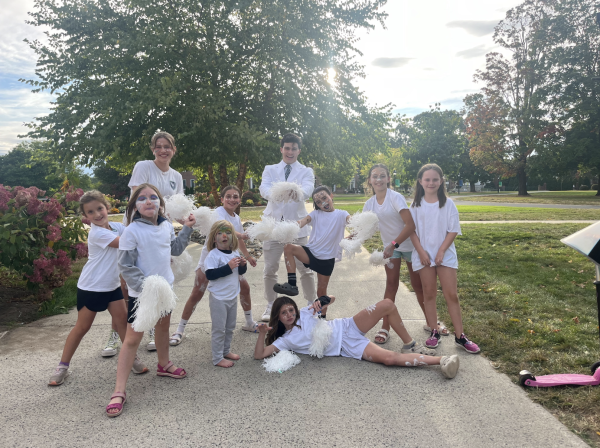Banksy in New York
 On October 31st, Banksy, a well-known British street artist, completed a month-long project which took place in New York City entitled: “Better Out Than In.” Beginning on the first of October, Bansky revealed a new piece for each day of the month. The artist posted a picture of each of the pieces and their locations on his website. Along with the expected stenciled graffiti paintings, Banksy included multiple “sculpture-like” displays, a YouTube video, live performances, and an Op-Ed submitted, though not published, to The New York Times. The project ended with a piece that read “Banksy!” in classic graffiti bubble letters. These letters, however, were three dimensional; they were large balloons hung from the side of a warehouse. Soon after their discovery, the balloons were taken down by police.
On October 31st, Banksy, a well-known British street artist, completed a month-long project which took place in New York City entitled: “Better Out Than In.” Beginning on the first of October, Bansky revealed a new piece for each day of the month. The artist posted a picture of each of the pieces and their locations on his website. Along with the expected stenciled graffiti paintings, Banksy included multiple “sculpture-like” displays, a YouTube video, live performances, and an Op-Ed submitted, though not published, to The New York Times. The project ended with a piece that read “Banksy!” in classic graffiti bubble letters. These letters, however, were three dimensional; they were large balloons hung from the side of a warehouse. Soon after their discovery, the balloons were taken down by police.
Banksy has been attracting public attention for decades. He has never revealed himself and does his artwork, even his studio pieces, in secret. There has been much speculation on his motives for anonymity, but many believe the mystery it creates is the secret to Banksy’s popularity. Many of Banksy’s most popular works deliver political messages, notably anti-war, anti-capitalist, and existentialist themes. The secretive and controversial nature of Banksy’s art creates a certain “Banksy mystique” that has earned him global recognition and wild popularity.
New Yorkers, however, have mixed feelings about what Bansky’s website calls: “An artist’s residency on the streets of New York.” After his unpublished Op-Ed was posted on his website, many New Yorkers were outraged. In it, Banksy criticizes the new World Trade Center, calling it “vanilla” and a “shy scraper.” If this criticism was not enough to faze New Yorkers, Banksy’s claim that the building serves as proof that “the terrorists won” put many up in arms. Many feel that Banksy, British and a recent arrival to New York City, should not be criticizing such an important part of New York’s identity. As Brian Major, a lifelong New Yorker, told CNN: “Everybody’s got a right to an opinion, but what gives him any kind of credibility in New York?”
New York demonstrated further aversion toward Banksy by challenging him at his own game. Within hours after each piece was revealed, other graffiti artists defaced and covered Banksy’s own graffiti. Almost all of Banksy’s New York pieces have already been destroyed. Banksy remarked in a rare interview with The Village Voice: “I used to think other graffiti writers hated me because I used stencils, but they just hate me.”


Banksy’s New York footprint wasn’t all bad, however. In one of Banksy’s “Better Out Than In” pieces, he bought a painting at a thrift shop and on it painted a Nazi officer. Under Banksy’s orders, the painting was then auctioned off for charity. The funds are to be sent to House Works, an organization that helps the homeless and those affected by HIV/AIDS. Rebecca Edmonson, a spokeswoman for Housing Works, told CNN that she estimated the painting would bring in around one million dollars for the charity.
Banksy included another special aspect to his New York project when he set up a street stand which sold genuine, signed Banksy canvases for just sixty dollars. The stand showed up unannounced and the attendant sat idle for the first few hours as people walked right by. Even if you are not a Banksy fan, sixty dollars is quite the bargain for artwork that often sells for tens of thousands of dollars. The stand did not reappear and Banksy posted on his website that it “was a one off.”
After an eventful and controversial month, Banksy has now completed “Better Out Than In” and will likely be moving on to his next location. Wherever that may be, Banksy fans are optimistic that more projects like this one await.








